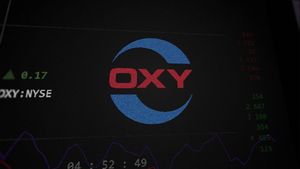
Cardlytics Inc. (NASDAQ: CDLX) saw its stock price fall sharply by 4.7% on Thursday, October 2, 2025, following the announcement of a significant 30% reduction in its workforce. This drastic measure, impacting approximately 120 full-time employees and contractors, is part of a broader enterprise-wide restructuring plan aimed at optimizing the company's cost structure and aligning resources with its core business priorities. The immediate market reaction underscores investor apprehension regarding the company's financial health and future growth trajectory despite the projected cost savings.
The strategic overhaul signals a critical juncture for the ad-tech company, known for its purchase-based intelligence platform. While the restructuring is intended to streamline operations and pave the way for sustained profitability, the scale of the layoffs suggests a deeper challenge within the company or the broader digital advertising sector. The implications of such a substantial workforce reduction extend beyond internal operations, potentially affecting product development, client relationships, and the overall competitive landscape of the personalized marketing industry.
A Deeper Dive into Cardlytics' Strategic Overhaul
The restructuring announced by Cardlytics (NASDAQ: CDLX) on October 2, 2025, is a comprehensive effort to stabilize the company amidst a challenging financial landscape. The core of this plan involves an approximately 30% reduction in its total workforce, affecting around 120 full-time employees and contractors. This move is projected to incur $2.3 million in severance and related expenses, primarily in the fourth quarter of 2025, but is expected to yield annualized cash savings of at least $26 million. CEO Amit Gupta emphasized that these difficult decisions are crucial for the long-term stability of the business, allowing Cardlytics to focus resources on critical partners, advertisers, and investments in future growth.
This significant workforce reduction did not emerge in a vacuum but followed a protracted period of financial distress for Cardlytics. The company has grappled with an approximate 13% decline in revenue and consistent unprofitability over the past twelve months. Quarterly reports painted a grim picture, with revenue decreases of 9% in Q2 2024, 16% in Q4 2024, and 8.4% in Q1 2025. A staggering net loss of $189.3 million for the full year 2024, largely due to a $131.6 million impairment of goodwill and intangible assets related to its Bridg platform, further highlighted the company's struggles. The stock has reflected this turmoil, plummeting to a 52-week low of $1.73 and shedding 86.07% of its value over the past year, contracting its market capitalization to $89 million by April 2025.
Beyond the immediate financial metrics, operational challenges such as delivery inefficiencies, declining Average Revenue Per User (ARPU), and advertiser hesitancy have plagued Cardlytics. The resignation of CEO Karim Temsamani and an investigation into potential federal securities law violations in August 2024 added layers of uncertainty. Despite these headwinds, Cardlytics' management has reiterated its commitment to achieving positive adjusted EBITDA for the full years 2025 and 2026, signaling a belief that this restructuring will be a turning point. Analyst reactions have been mixed, with some downgrading the stock and lowering price targets, while others, like Citron Research, have expressed optimism, even suggesting a potential acquisition or a significant rebound to a $10 target based on the company's valuable first-party data and potential for cash flow stabilization.
Reshaping the Commerce Media Landscape: Winners and Losers
The significant restructuring at Cardlytics (NASDAQ: CDLX) is poised to send ripples across the highly competitive commerce media and ad-tech sectors, creating both opportunities and challenges for various players. Cardlytics' struggles, particularly the non-renewal of its agreements with Bank of America (NYSE: BAC) set to expire on July 31, 2025, underscore the increasing desire of financial institutions to control and monetize their first-party transaction data directly, potentially empowering new entrants and existing competitors.
Among the most significant potential beneficiaries are financial institutions that have invested in or are developing their own in-house financial media networks (FMNs). Chase Media Solutions, for instance, stands out as a prime example, leveraging Chase's vast customer base and transaction data for targeted advertising. Cardlytics' difficulties might accelerate this trend, as other banks perceive greater value and control in building proprietary platforms rather than relying on third-party providers. Similarly, established Retail Media Networks (RMNs) like Amazon Ads (NASDAQ: AMZN), Walmart Connect (NYSE: WMT), and Instacart (NASDAQ: CART) are likely to attract increased advertiser spending. These platforms offer robust, closed-loop ecosystems with direct access to purchase data and demonstrable ROI, making them attractive alternatives for brands re-evaluating their commerce media strategies. Diversified ad-tech platforms such as Criteo (NASDAQ: CRTO) and The Trade Desk (NASDAQ: TTD), known for their broad solutions and adaptability to evolving data privacy landscapes, may also capture displaced ad budgets. Furthermore, direct competitors in the card-linked offer space, including Branch, InMobi, and Cartera Commerce, could seize this opportunity to court financial institution partners and advertisers seeking more stable or compelling alternatives.
Conversely, the restructuring poses risks for several entities. Smaller, niche card-linked offer providers, particularly those heavily reliant on third-party bank partnerships akin to Cardlytics' model, may face heightened scrutiny from financial institutions and advertisers, making it harder to secure or retain agreements. Advertisers who have heavily invested in Cardlytics' platform for their loyalty and advertising campaigns will need to urgently re-evaluate their strategies and diversify their commerce media investments to mitigate risks associated with the company's operational shifts and the loss of key partnerships. More broadly, companies across the industry that lack robust first-party data strategies or effective methods to monetize their proprietary data may find themselves at a disadvantage as the market increasingly pivots towards direct data activation and measurable return on ad spend. The Bank of America situation, in particular, highlights a growing preference among major financial players to bring data monetization in-house, posing a long-term challenge for third-party intermediaries.
Wider Significance: A Bellwether for the Evolving Ad-Tech Landscape
Cardlytics' (NASDAQ: CDLX) recent restructuring is not an isolated incident but rather a stark reflection of broader, ongoing trends sweeping across the technology sector. The company's decision to cut 30% of its workforce aligns with the widespread tech layoffs witnessed since 2022, a phenomenon driven by a confluence of factors including overhiring during the pandemic, persistent economic uncertainties, mounting investor pressure for profitability, and the transformative integration of artificial intelligence (AI). This strategic overhaul at Cardlytics underscores the imperative for efficiency and strategic realignment that many tech companies are currently navigating.
The ripple effects of Cardlytics' situation are particularly pertinent for the ad-tech sector, especially concerning critical partnerships and the ever-present issue of data privacy. Cardlytics' business model relies heavily on partnerships with major U.S. banks to access first-party purchase data. The non-renewal of its agreement with Bank of America (NYSE: BAC), set to expire in July 2025, serves as a potent signal that financial institutions are increasingly seeking greater control over their proprietary data, potentially leading to renegotiations or diversification of ad-tech providers. While Cardlytics' use of aggregated, anonymized first-party data is advantageous in a privacy-conscious era, any internal instability could prompt partners to scrutinize data governance and cybersecurity measures more closely. More broadly, the industry will continue its pivot away from third-party cookies towards robust first-party data strategies and privacy-by-design solutions, a trend that Cardlytics' challenges may accelerate.
Historically, corporate restructurings in tech and advertising often mark periods of significant industry evolution. IBM's (NYSE: IBM) multi-decade transformation from a hardware giant to a leader in cloud and AI services, and the widespread consolidation and strategic shifts following the dot-com bubble burst, serve as precedents for how companies adapt to survive and thrive amidst disruption. The advertising industry itself has consistently reshaped itself with each technological leap, from print to digital, necessitating new business models and operational efficiencies. Cardlytics' current predicament, therefore, is not merely a corporate challenge but a microcosm of the larger industry's struggle to balance growth, profitability, and innovation in a rapidly changing economic and technological environment. It highlights a critical juncture where ad-tech companies must prove their value proposition and demonstrate a clear path to sustainable profitability.
The Path Forward: Navigating a Pivotal Juncture
Cardlytics' (NASDAQ: CDLX) significant restructuring marks a pivotal moment, with the company charting a course for both short-term stabilization and long-term sustainability. In the immediate future, the primary focus is on realizing the projected annualized cash savings of at least $26 million from the workforce reduction and other cost-cutting measures. This aggressive cost optimization, coupled with the commitment to achieving positive adjusted EBITDA for the full years 2025 and 2026, aims to improve the company's profitability and cash flow, providing much-needed financial stability. The recent debt refinancing efforts also bolster liquidity, offering a stronger foundation for operational efficiency and a more concentrated approach to its core card-linked offer network.
Looking further ahead, Cardlytics faces the crucial task of diversifying its financial institution partnerships, a necessity highlighted by the non-renewal of its agreement with Bank of America (NYSE: BAC), which expires in July 2025. This diversification is essential to mitigate single-source risk and expand its reach. Concurrently, scaling its Bridg platform, which offers SKU-level insights and identity resolution, is critical for offsetting potential declines from core revenue streams and enhancing its value proposition to advertisers. Strategic pivots will include a strong emphasis on high-margin services, continued investment in AI-driven automation and self-serve advertising capabilities to attract a broader range of advertisers, and proactively strengthening relationships with existing and prospective financial institution partners.
Cardlytics is uniquely positioned to capitalize on several market opportunities, particularly the burgeoning growth in retail media networks and the increasing demand for measurable return on ad spend (ROAS). Its reliance on first-party purchase data, obtained with consumer consent through banking apps, provides a significant competitive advantage in an increasingly privacy-centric advertising landscape. The demand for hyper-personalized offers and loyalty programs also presents avenues for growth. However, the company must contend with intense competition in the digital advertising sector, ongoing economic headwinds that could impact marketing budgets, and the persistent challenge of relying on its financial institution partners. Addressing historical issues of delivery inefficiencies and translating consumer engagement into consistent billings growth will be paramount for restoring advertiser confidence and ensuring a successful turnaround.
Wrap-Up: Charting a Course Through Turbulent Waters
Cardlytics' (NASDAQ: CDLX) recent restructuring represents a critical recalibration for a company navigating significant financial headwinds and a rapidly evolving ad-tech landscape. The 30% workforce reduction, alongside other enterprise-wide cost-saving measures, is a decisive move aimed at achieving an estimated $26 million in annualized cash savings and fulfilling the company's commitment to positive adjusted EBITDA for 2025 and 2026. While these actions are intended to stabilize the company's financial footing, they come on the heels of persistent revenue declines, widening net losses, and a class-action lawsuit alleging misleading growth projections, all of which underscore the deep challenges Cardlytics has faced. A particularly impactful development is the significant brand content restrictions imposed by its largest financial institution partner, which began on July 1, 2025, and is expected to materially affect Q3 2025 billings and revenue.
Moving forward, the ad-tech market is characterized by a relentless drive towards first-party data dominance, enhanced by AI and machine learning, and a growing emphasis on measurable outcomes. Cardlytics' core strength lies in its unique access to anonymized, aggregated purchase data from financial institutions, offering unparalleled targeting and closed-loop measurement capabilities in this privacy-centric environment. The company's strategic focus on "platformizing" its business, including enhancing bank programs, expanding offer and loyalty experiences, and growing partnerships with neobanks and fintechs, aims to leverage this competitive advantage. The long-term vision includes enabling self-service platforms for smaller, local businesses, potentially unlocking a vast new revenue stream.
The lasting impact of this restructuring will depend on Cardlytics' ability to execute these strategic pivots effectively. While the cost-cutting provides a necessary financial reset, the company must also address its reliance on a limited number of large financial institution partners and demonstrate consistent operational efficiency to regain advertiser confidence. For investors, the coming months will be crucial. Close attention should be paid to Cardlytics' financial performance and guidance, particularly its progress towards positive adjusted EBITDA and how it mitigates the impact of the content restrictions. Monitoring the execution of its strategic initiatives, including diversification of partnerships and the development of self-service options, along with its debt management and competitive positioning in the dynamic ad-tech market, will be key indicators of the company's long-term viability and potential for recovery.
This content is intended for informational purposes only and is not financial advice





